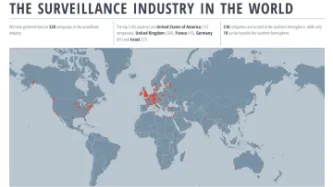Search
Content type: Examples
In 2018 a report from the Royal United Services Institute found that UK police were testing automated facial recognition, crime location prediction, and decision-making systems but offering little transparency in evaluating them. An automated facial recognition system trialled by the South Wales Police incorrectly identified 2,279 of 2,470 potential matches. In London, where the Metropolitan Police used facial recognition systems at the Notting Hill Carnival, in 2017 the system was wrong 98% of…
Content type: Examples
In May 2018, US Immigration and Customs Enforcement abandoned the development of machine learning software intended to mine Facebook, Twitter, and the open Internet to identify terrorists. The software, announced in the summer of 2017, had been a key element of president Donald Trump's "extreme vetting" programme and expected to flag at least 10,000 people a year for investigation. ICE decided instead to opt for a contractor who could provide training, management, and human personnel to do the…
Content type: Examples
Police investigating the 2016 rape and murder of a 19-year-old medical student were unable to search the iPhone of suspect Hussein Khavari, an Afghan refugee who declined to give them his password. The investigators gained access to the phone via a private company in Munich, and went through Apple's health app data to discern what kinds of activities Khavari participated in on the day of the murder. The app identified the bulk of his activity as "climbing stairs". An investigator of similar…
Content type: Examples
A new generation of technology has given local law enforcement officers in some parts of the US unprecedented power to peer into the lives of citizens. In Fresno, California, the police department's $600,000 Real Time Crime Center is providing a model for other such centres that have opened in New York, Houston, and Seattle over the decade between 2006 and 2016. The group of technologies used in these centres includes ShotSpotter, which uses microphones around the city to triangulate the…
Content type: Examples
In 2016 researchers in China claimed an experimental algorithm could correctly identify criminals based on images of their faces 89% of the time. The research involved training an algorithm on 90% of a dataset of 1,856 photos of Chinese males between 18 and 55 with no facial hair or markings. Among them were 730 ID pictures of convicted criminals or suspects wanted by the Ministry of Public Security. However, criminology experts warned that the results may merely reflect bias in the criminal…
Content type: Examples
A new generation of technology has given local law enforcement officers in some parts of the US unprecedented power to peer into the lives of citizens. The police department of Frenso California uses a cutting-edge Real Time Crime Center that relies on software like Beware.
As officers respond to calls, Beware automatically runs the address. The program also scoures billions of data points, including arrest reports, property records, commercial databases, deep Web searches and the man’s social…
Content type: Explainer
What is the Global Surveillance Industry?
Today, a global industry consisting of hundreds of companies develops and sells surveillance technology to government agencies around the world. Together, these companies sell a wide range of systems used to identify, track, and monitor individuals and their communications for spying and policing purposes. The advanced powers available to the best equipped spy agencies in the world are being traded around the world. It is a…






